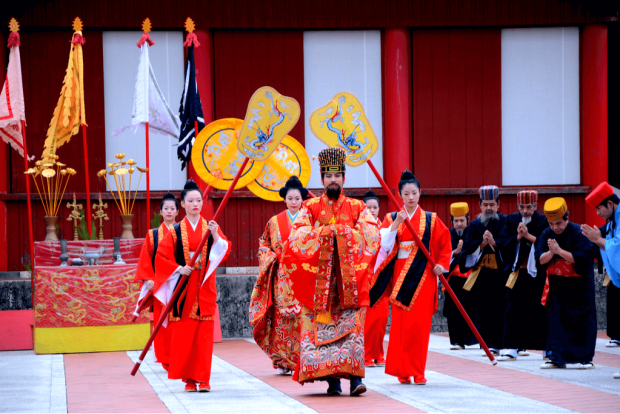Does Japan Celebrate Lunar New Year?
When we think of the confluence of cultures and traditions, few countries stand out as prominently as Japan. Over the millennia, Japan has absorbed, modified, and sometimes completely transformed various cultural elements from its neighbors. One such element is the celebration of the New Year. Across East Asia, the Lunar New Year is celebrated with much pomp and splendor. However, does Japan, with its unique amalgamation of history and modernity, follow suit?
Historical Background
The Chinese Influence
It’s crucial to recognize Japan’s historical interactions with China to understand its traditions. Centuries ago, Japan, like many of its neighbors, embraced the Chinese lunisolar calendar. This meant that the Japanese once celebrated Lunar New Year, replete with festivities echoing the vivid celebrations seen across China and other parts of Asia. Does Japan celebrate Lunar New Year?
Transition to the Gregorian Calendar
In 1873, a significant shift occurred. With the Meiji Restoration, Japan decided to adopt the Gregorian calendar, making January 1st the official New Year’s Day. This decision wasn’t merely an administrative one; it represented a broader move to align Japan with Western practices and modernity. Consequently, the traditional Lunar New Year celebrations faded into the background.
Comparing Japanese New Year and Lunar New Year
Similarities in Celebrations
Remnants of Lunar New Year still linger in Japanese customs. The Japanese New Year, known as “Shogatsu,” bears striking resemblances to the Lunar New Year. Both celebrations are family-centric, emphasizing reunions, feasts, and hopes for a prosperous year.
Key Differences
However, the differences are notable. While Lunar New Year across many Asian cultures is characterized by the color red, symbolizing luck and warding off evil, the Japanese New Year is often associated with the color white, signifying purity and renewal. Moreover, the nature of festivities and the folklore surrounding them differ considerably.
Traditions Unique to Japan
Hatsumode: First Shrine Visit
One cannot discuss the Japanese New Year without mentioning “Hatsumode”. This tradition involves individuals visiting shrines or temples for the first time in the new year. It’s a spiritually enriching experience, with families congregating to pray for blessings, prosperity, and good health.
Osechi Ryori: New Year Cuisine
Food is an integral part of any celebration, and the Japanese New Year is no exception. “Osechi Ryori” is a traditional meal, with each dish bearing specific symbolism. Whether it’s hopes for a bountiful harvest or a desire for longevity and happiness, each element of the meal encapsulates a particular wish for the future.
How Lunar New Year is Perceived in Modern Japan
Influence of Pop Culture
Globalization and pop culture have reintroduced facets of the Lunar New Year into modern Japanese society. For instance, one might spot Lunar New Year themes in popular anime or manga. This incorporation signifies a broader acknowledgment and appreciation of shared Asian traditions.
The Youth and Lunar New Year
Interestingly, for many young Japanese people, the Lunar New Year is not just seen as a distinctly Chinese event. Instead, it’s viewed as a pan-Asian celebration, an embodiment of shared cultural heritage that transcends national boundaries.
Bridging the Gap: Globalization and Lunar New Year Celebrations in Japan
Given Japan’s cosmopolitan nature, it’s no surprise that the Lunar New Year has seen a resurgence in certain areas, especially regions with significant Chinese communities. Tourist attractions and events centered around Lunar New Year are not uncommon, merging tradition with modern appeal. For an in-depth look at this, check out this article.
Conclusion: Tradition and Modernity Intertwined
In conclusion, while Japan may not officially celebrate Lunar New Year as a national event, the undercurrents of this age-old tradition persist. Japan’s New Year celebrations, steeped in unique customs and practices, also echo sentiments common to Lunar New Year festivities across Asia. It’s a beautiful testament to Japan’s enduring spirit of harmony and synthesis.
Frequently Asked Questions
Did Japan ever celebrate Lunar New Year?
Yes, historically, when the Chinese lunisolar calendar was in use in Japan, Lunar New Year was celebrated.
When did Japan begin marking New Year’s on January 1st?
Following the Meiji Restoration, Japan adopted the Gregorian calendar in 1873 and started observing New Year’s Day on January 1st.
Is the Lunar New Year considered a public holiday in Japan?
No, it is not a public holiday. However, some local celebrations might take place, especially in areas with significant Chinese communities.
How do the celebrations of Japanese New Year differ from the Lunar New Year?
While there are thematic similarities like family reunions and feasting, specific customs, like Hatsumode and Osechi Ryori, are unique to Japan.
Are there any regions in Japan where Lunar New Year is celebrated prominently?
Yes, certain regions, especially those with larger Chinese populations, may host events and celebrations to mark Lunar New Year.




